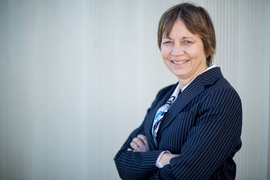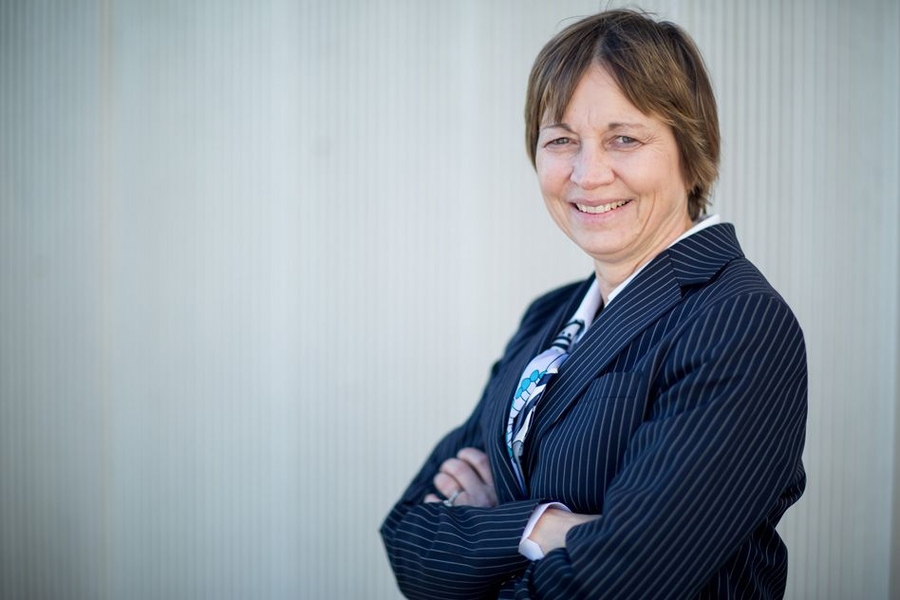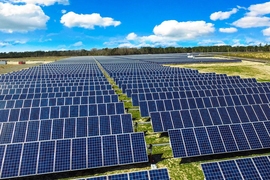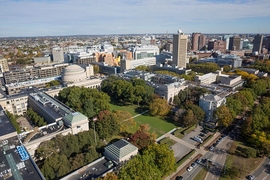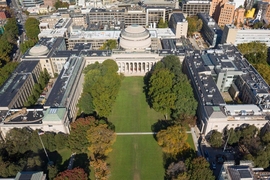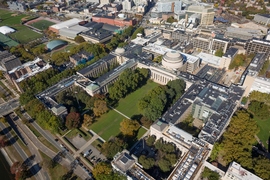At this time last year, President L. Rafael Reif announced the Institute’s five-year plan for responding to the risks posed by climate change. Maria Zuber, vice president for research and the E.A. Griswold Professor of Geophysics, has been coordinating MIT’s climate action efforts since the plan’s announcement. She recently shared with MIT News highlights from the plan’s first year of implementation — as well as her thoughts on what needs to happen for the world to avoid the worst impacts of climate change.
Q: The Plan for Action on Climate Change includes a number of components focused on the campus, including a goal of reducing campus carbon emissions 32 percent by 2030. What kind of progress has the Institute made on this front?
A: It’s important to underscore that the 32 percent goal is a floor, not a ceiling. Students and faculty have challenged us to become a carbon-neutral campus, and we aspire to do that as soon as we can. We are committed to making investments both on campus and off campus that will lead to a reduction in our overall carbon footprint. Our approach includes a range of strategies, from the expanded use of on-site and off-site renewables, to robust investments in energy efficiency and high-performance building design standards, to efforts to engage our community to reduce consumption.
And we’ve just taken a big step in the right direction with a new agreement to purchase power from a solar farm in North Carolina, in partnership with two other organizations in Greater Boston: Boston Medical Center and Friends of Post Office Square. The Department of Facilities and the Office of Sustainability really led the charge here, and they deserve great credit. This agreement is good news for a lot of different reasons, but let me give you three:
First, this single solar purchase will address approximately 17 percent of MIT’s campus carbon emissions. To give you a sense of the scale you need to achieve this, consider that the new solar development — called Summit Farms — covers 650 acres, while MIT’s campus is just 168 acres. At Summit Farms, 255,000 solar panels will generate 60 megawatts of electricity. MIT has agreed to purchase 44 of those megawatts.
Second, we believe Summit Farms demonstrates to other organizations that there is a collaborative model that works for developing renewable energy projects that otherwise wouldn’t get built. We intend to share our experience on this project far and wide, because we want everyone — would-be power customers, developers, banks, and so on — to know that this makes good sense from both an economic perspective and an environmental perspective.
Finally, on an issue that I spend a lot of time thinking about, Summit Farms will create hundreds of new construction jobs. Many people don’t realize this, but the solar industry now employs more than 209,000 people in the United States — roughly triple the number of jobs in the coal mining industry. If we are going to meet the world’s climate goals, then we have to do a better job of telling the story of the economic opportunities available in the transition to clean energy, and we have to make sure that these opportunities are broadly available in communities around the country.
Q: This year you established a Climate Action Advisory Committee to “consult with and advise” you on the implementation and assessment of the plan. Can you give us an update on the committee’s work?
A: A major focus of the plan was the idea of engagement — that obviously no single institution can solve climate change on its own, so what we need is to engage with industry, government, and civil society to develop the kind of multifaceted solutions that reflect the complexity and urgency of the climate threat. With that in mind, the new committee’s first charge is to help come up with ideas for engagement, along with ideas for assessing whether or not we’re having the kind of impact we want to have.
We had the first committee meeting of the fall semester on Oct. 4, and we began with a conversation about the politics of climate change. Climate change is a technological problem, a business problem, an urban design problem — the list goes on. But ultimately it is a political problem, and we want to do what we can to inform the debate with high-quality research and analysis, grounded in the best science.
I was really impressed with the quality of the discussion we had in the committee. We have students, postdocs, staff, faculty, alumni, and Corporation members all thinking hard about what MIT can do to engage productively with other organizations.
You know, 2014 was the warmest year on record — until 2015 replaced it. And unfortunately, 2016 is set to break the record yet again. Climate change is not just something for future generations to worry about — it’s happening now. And I think the members of the committee share a sense that we all need to roll up our sleeves and help solve this problem.
Q: How would you say that the MIT community has responded to the fact that climate change is now a top priority for the Institute?
A: I always remind people that MIT has been doing excellent work on climate change and related issues for decades. This year, for example, the MIT Joint Program on the Science and Policy of Global Change celebrated its 25th anniversary. I think the Plan for Action on Climate Change has helped to amplify all of this great work, and I think it has inspired more people to join the effort.
We have members of the MIT community coming up with creative ways to extend the plan’s reach. For example, two members of the group MIT Alumni for Climate Action Leadership developed an idea for building an online community of learners and doers, and that idea, in collaboration with the Office of Digital Learning and the Office of Communication, became ClimateX, which is now in a pilot phase.
Let me give you another example: The Environmental Solutions Initiative, along with faculty members who teach the General Institute Requirements, is working to make sustainability-focused content available for embedding into the GIRs. This will ensure that all undergraduates have the opportunity to be exposed to these issues during their time at MIT.
Actions like these, happening all across our community, demonstrate the incredible enthusiasm that members of the MIT community have for doing their part to address climate change.
I also want to make a plug for the forum on climate change ethics that my office is sponsoring on the evening of Nov. 17. The idea for the forum came from Fossil Free MIT, which has done incredible work to organize the event. It will be an important opportunity for our community to discuss the ethical responsibilities facing individuals and institutions in responding to climate change. We’re thrilled that Professor Dale Jamieson from New York University has agreed to keynote the forum. I encourage members of the MIT community to mark their calendars for what I know will be a fascinating conversation.
